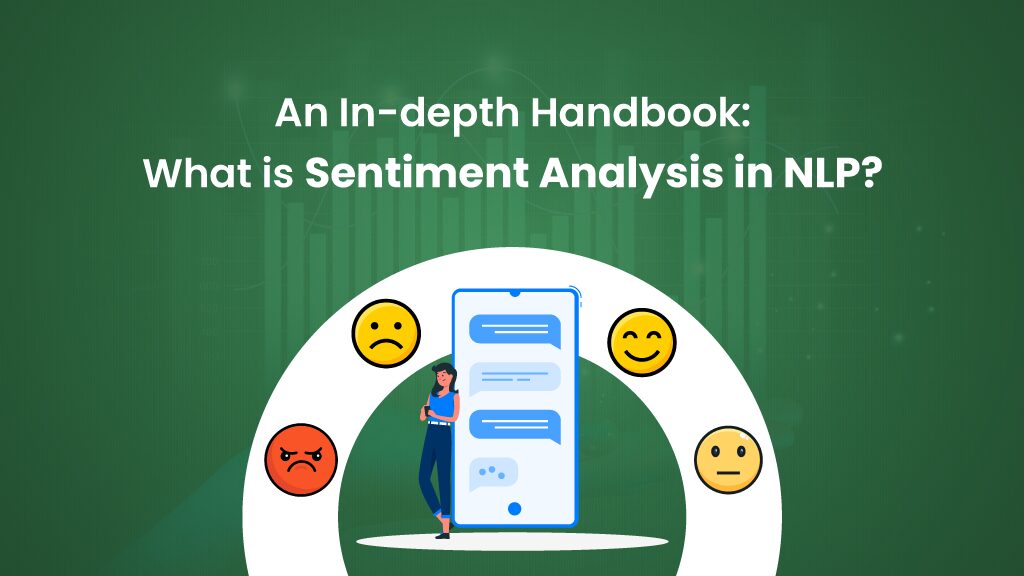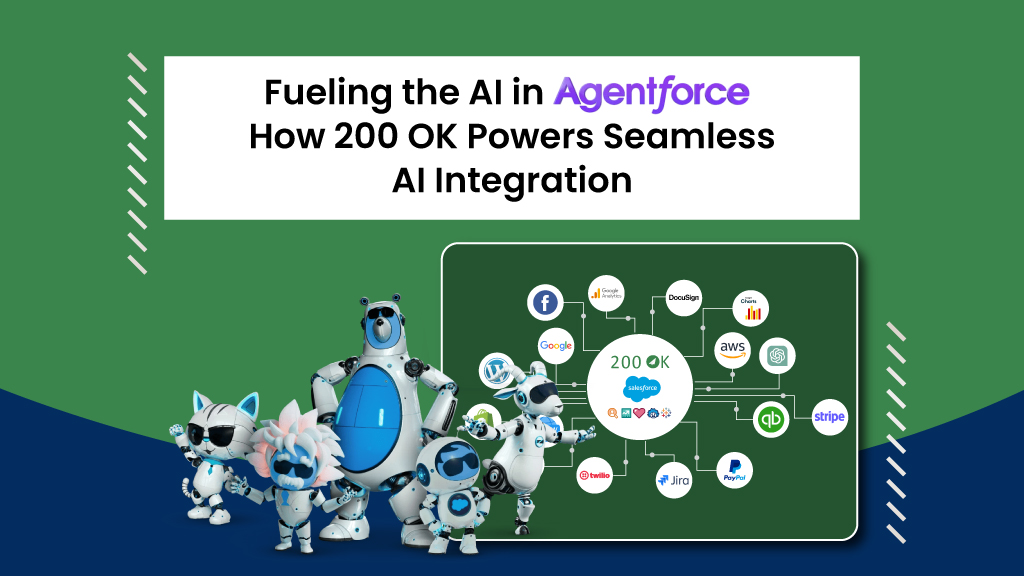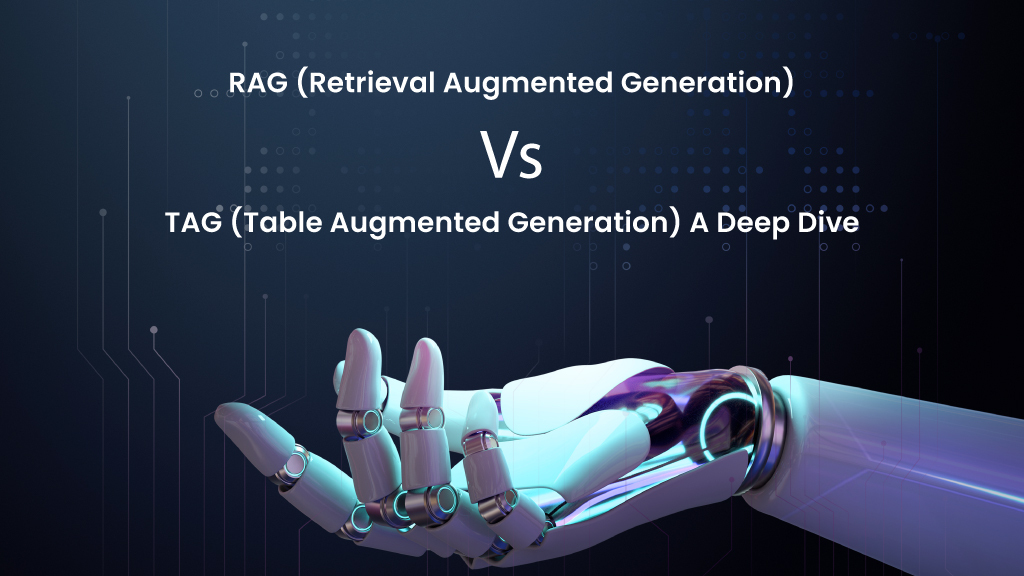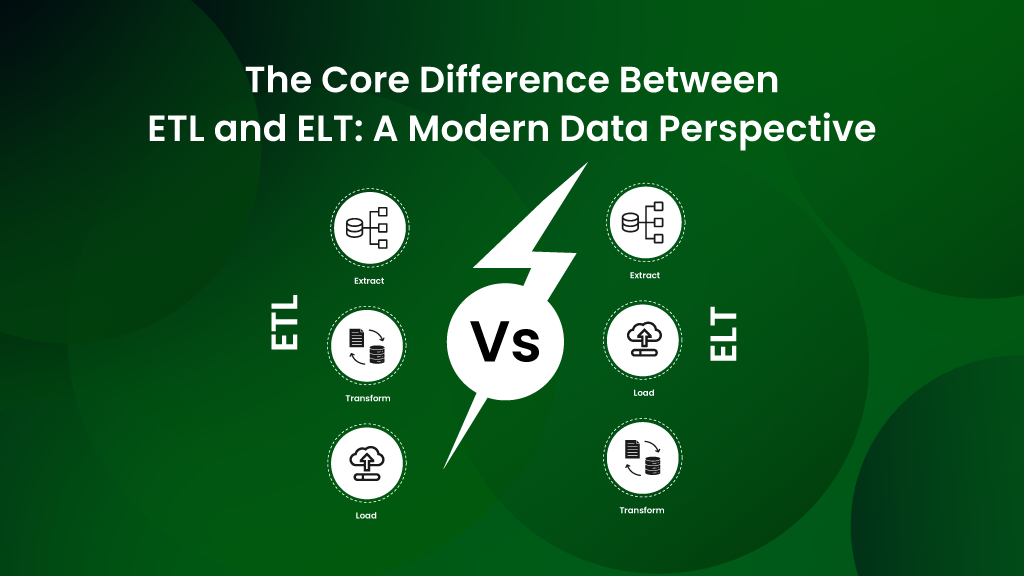“Machine intelligence is the last invention that humanity will ever need to make.” Nick Bostrom
Humans have come up with so many inventions till now, and Nick here is saying that Machine Learning is the very last invention that we will ever need to come up with, like ever! Well, let me tell you Nick’s thought process here.
The only difference between a human and a machine is the “emotion”. Humans can feel and understand emotions, which usually governs our decision-making. Not only do machines help us to automate processes and solve complex problems in the blink of an eye, but with NLP (which is a part of machine learning), even machines can be trained to analyze and understand human sentiments and emotional tones!
By training different NLP models for sentiment analysis on vast amounts of data, the ML algorithms can understand if the tone in a message is positive, negative, or neutral for further triggered actions to be undertaken.
In this blog, we have done in-depth research and created a handbook, to create a resource that has everything about it from A to Z, so hold back and get ready for an elaborate and intensive walkthrough on Sentiment Analysis in NLP.
What is Sentiment Analysis?
Sentiment analysis, as the name suggests, is a process by which the emotion or the tone can be easily judged, by leveraging Machine Learning. Sentiment Analysis in NLP not only helps to understand the emotion polarity behind a piece of text (meaning positivity or negativity), it can also determine the type of emotion or feeling, like happy, sad, angry, and so on.
One of the best examples to understand Sentiment Analysis in NLP is a Chatbot.
Just imagine, you had ordered fresh tomatoes on an instant-delivery grocery application. But guess what? You received a kilogram of spoilt, rotten tomatoes.
Now you have two options, either you call customer care, or you chat with a virtual assistant, AKA the chatbot.
Going on the conventional route with option one, you have a long waiting list of customers calling on the same number with various issues.
Trying out the second option, here is how it will go- you get greeted by your personal assistant, and you type out your issue of the rotten tomatoes there.
Next up, with Sentiment Analysis in NLP, the chatbot understands that you’re very angry and frustrated, and also understands that you’re their loyal customer, hence prioritizing your issue.
It gives you an option for uploading the picture of the rotten tomatoes, it passes on the picture for analysis and meanwhile gives you two options, to replace or to claim a refund.
And voila, within seconds, you get your refund, all with the power of Sentiment Analysis in NLP.
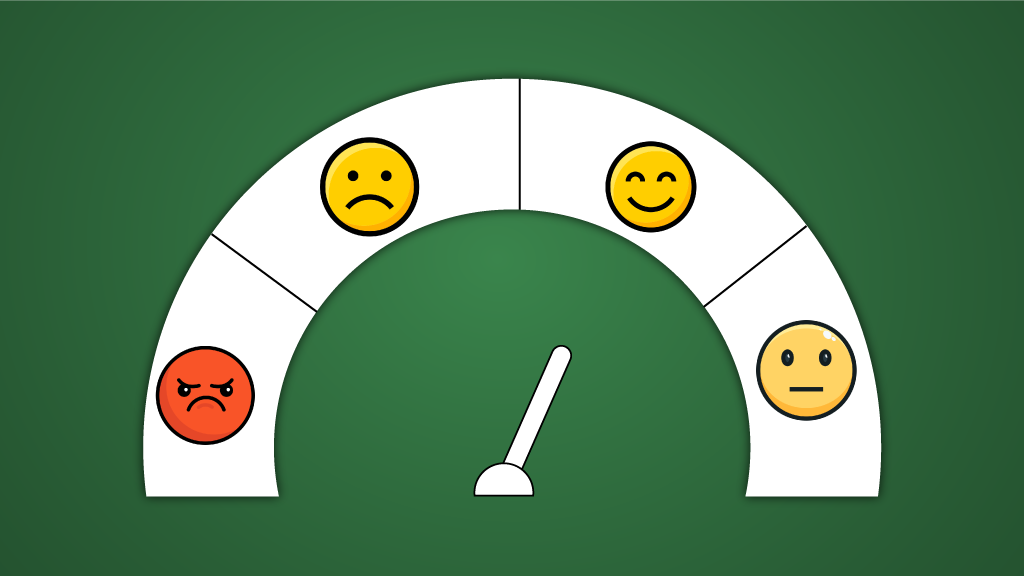
How does Sentiment Analysis work?
1. Preprocessing of Text:
Data Cleansing and Tokenization-This process involves cleaning the data for removal of any irrelevant characters, punctuation, stop words (common words like “and,” “the,” etc.), and converting all text to a consistent format, usually lowercase.
After this cleanse, the data is broken down into smaller pieces, like small words, also called tokens for the data to be worked on for analysis.
2. Feature Extraction:
Word Embeddings and N-grams–After the tokenization, the sentiment analysis models turn these tokens into numerical vectors for capturing the semantic meaning, which is done through “Word Embedding.”
Once the numerical vectors are created, to capture the context and relationship of words, using N-grams, the models look at the sequence of words.
3. Sentiment Classification Process:
Lexicon-Based Approach: One method uses predefined dictionaries or lexicons that associate specific words with sentiment (positive, negative, neutral). For example, words like “happy” might be labeled as positive, while “sad” would be negative.
Machine Learning-Based Approach: In more advanced sentiment analysis, machine learning models like Naive Bayes, Support Vector Machines (SVM), or deep learning models like LSTMs and Transformers are trained on labeled datasets to learn patterns in the text that correspond to different sentiments.
Contextual Understanding: Some models, especially those based on deep learning (like BERT), are capable of understanding context and nuances in language, allowing them to better interpret sentiment even in complex sentences.
4. Emotion Scoring:
Different models give their sentiment score in different types. The two main types of sentiment scoring are-
Polarity score:
Certain models throw a polarity score, which ranges from -1 to +1 where -1 is a very negative sentiment, 0 is neutral and +1 is the most positive one.
Probability score:
Here, the models provide a score for every sentiment category (positive, negative, neutral), this score indicates how confident the model is about the sentiment.
5. Output Interpretation:
Sentiment labeling and next steps-
Based on the polarity or the probability score, the text is labeled as the relevant sentiment (positive, negative, or neutral). Based on the labeling, further analysis can be done to make insightful decisions.
Types of Sentiment Analysis
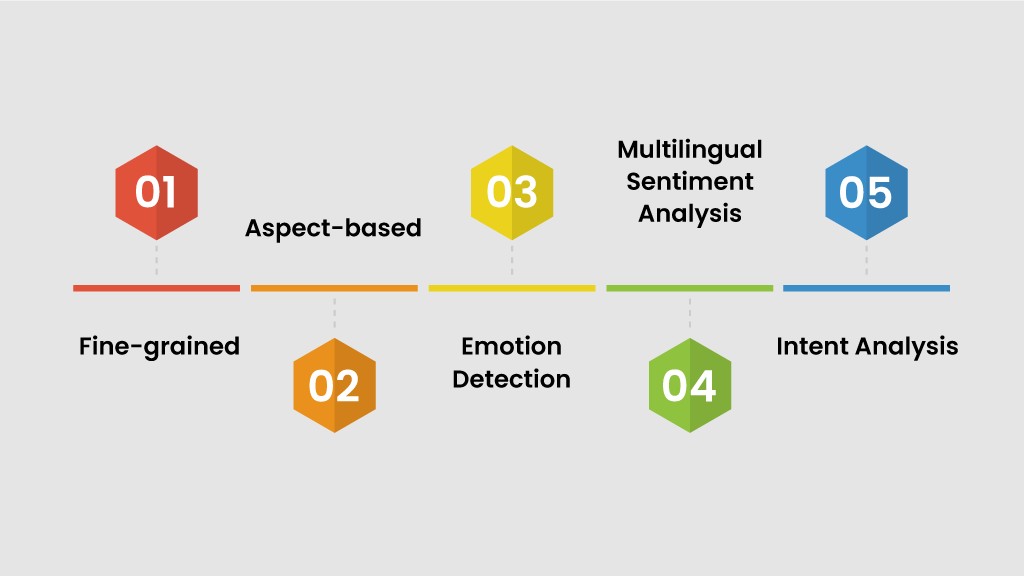
The classification of the different types of sentiment analysis can be done based on the layers in which the analysis is being performed, the focus, or the techniques being undertaken, here we have listed the 5 main types of sentiment analysis in NLP:
Fine-grained
This kind of sentiment analysis in NLP is not just restricted to the basic polarity categories, Positive, negative, and neutral. It goes one step further and analyzes the sentiment in depth for extreme positivity and negativity. The best example is customer feedback surveys where businesses need to capture more detailed sentiments, such as rating scales (e.g., 1-5 stars).
Aspect-based
In this kind of analysis, the model focuses on just a few aspects of the text instead of analyzing the entire chunk of text. For example, a customer might have expressed positivity for the fast delivery of the products but objected to the quality of tomatoes delivered, then sentiment analysis will help the business understand what is going right and what aspects they need to improve.
Emotion Detection
Just like in the case of fine-grained, emotion detection also takes the analysis up a notch and detects the exact sentiment of the users being expressed, like happy, sad, angry, frustrated, etc. Emotion detection is useful in understanding customer emotions in social media posts, reviews, or customer service interactions, providing deeper insights into how customers feel about a brand or product.
Multilingual Sentiment Analysis-
As the name itself suggests, this analysis involves understanding the sentiments of different languages. This involves analyzing the intricacies of different languages and then interpreting the emotions behind them. This kind of analysis is especially useful for big corporates which have customers, speaking languages from different corners of the world.
Intent Analysis-
There is always an intent behind how people behave the way they do. Intent analysis is more than just sentiment analysis because apart from sentiment analysis, it also determines the intent behind it. This kind of analysis is most useful in customer service workflows where it is important to understand why customers are behaving a certain way, whether they are facing an issue in the product quality or service side or they’re not able to find what they are looking for.
Sentiment Analysis Techniques
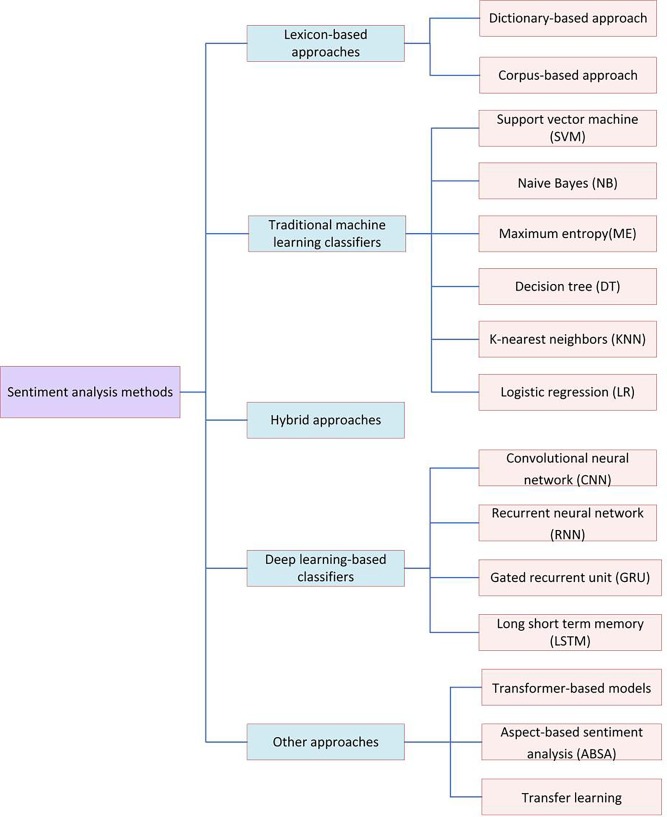
1. Rule-Based Sentiment Analysis
This technique relies on a set of predefined linguistic rules and lexicons (dictionaries of words associated with specific sentiments) to analyze the sentiment of a text.
Words or phrases in the text are matched against the lexicon, and a sentiment score is assigned based on the presence of positive, negative, or neutral terms.
This technique is super simple to implement and doesn’t require labeled training data.
The rule-based sentiment analysis can be limited in accuracy and struggles with context and nuance.
2. Lexicon-Based Sentiment Analysis
Similar to rule-based methods, lexicon-based techniques use a dictionary of words that are tagged with sentiment values. However, it may also incorporate weighted values for different words based on their intensity.
The text is analyzed to identify sentiment-laden words from the lexicon. Sentiment scores are then calculated based on the occurrence and intensity of these words.
This specific technique is easy to interpret and implement, and works well for straightforward text, but is limited by the quality and coverage of the lexicon, and may miss context or sarcasm.
3. Machine Learning-Based Sentiment Analysis
Machine learning techniques involve training a model on a labeled dataset, where the sentiment of each piece of text is known. The model learns patterns and associations between words and sentiments from this data.
Popular algorithms include Naive Bayes, Support Vector Machines (SVM), and Random Forests. The model is trained on a labeled dataset, and once trained, it can predict the sentiment of new, unseen text.
ML-based sentiment analysis can handle large datasets, adaptable to different types of text, more accurate than rule-based methods. However, it requires a labeled dataset for training and may require significant computational resources.
4. Deep Learning-Based Sentiment Analysis
Deep learning techniques, such as Recurrent Neural Networks (RNNs), Long Short-Term Memory Networks (LSTMs), and Transformers (like BERT), are used for more advanced sentiment analysis.
These models can capture complex patterns and long-term dependencies in the text. They are trained on large datasets and can handle nuanced sentiments, including sarcasm and context-dependent sentiments.
The high of this technique is higher accuracy, especially with large and complex datasets, capable of understanding context and nuance. On the low, it requires extensive computational resources and large amounts of labeled data for training, which can be difficult to interpret.
5. Hybrid Sentiment Analysis
Hybrid techniques combine rule-based, lexicon-based, and machine-learning approaches to improve accuracy and flexibility.
A hybrid model might start with a rule-based approach to handling simple cases, and then apply a machine-learning model to deal with more complex or ambiguous text.
It balances the simplicity of rule-based methods with the accuracy of machine learning, adaptable to various types of text. But, it can be very complex to implement and requires careful tuning to balance different components.
How Sentiment Analysis is Useful: 5 Top Use-Cases
Despite the fact that there are a huge number of benefits to Sentiment Analysis in NLP, we have enlisted the top 5 ones, below-
1. Spotless Reputation Management:
Your customers are humans, and to make a mark in the industry, brands need to be humans too! By promptly answering their customer’s feelings, businesses today can easily stand out.
With sentiment analysis, organizations can easily track what customers think about them. By analyzing their comments and remarks on social media, blogs, and news, businesses can quickly respond to negative sentiments and protect their reputation.
2. Understanding Your Customer Like a Pro:
Your customers always tell you where you’re wrong! By analyzing reviews, surveys, and social media posts, businesses can understand customers’ feelings about their products or services. This helps in identifying areas for improvement and enhancing customer satisfaction.
3. Develop Your Product Like Never Before
While developing your product, you definitely need feedback. And what better feedback than who is going to use it? Use sentiment analysis in NLP to gauge reactions to new features or products. This helps in refining offerings based on what customers like or dislike, leading to better product-market fit.
4. Analyzing the Competition Effortlessly
By using Sentiment Analysis, you can easily check how your brand looks in front of your competitors. Easily analyze market trends and also how your competitors are doing, which helps in identifying strengths and weaknesses in your market position.
5. Applying Sentiment Analysis Internally
It is not necessary to apply sentiment analysis only outside of your organization. One of the best applications of it is inside. Leverage it to employee feedback to gauge job satisfaction, identify issues within the organization, and improve workplace culture.
Wrap-Up
Sentiment analysis in NLP is a powerful tool that enables organizations to tap into the emotions and opinions expressed in text data.
Whether it’s improving customer satisfaction, managing brand reputation, or conducting market research, sentiment analysis is an essential component of modern data analysis.
As the field of NLP continues to evolve, so too will the capabilities of sentiment analysis in NLP, offering even deeper and more nuanced insights into the vast world of human emotions expressed through text. If you want to know more about how Sentiment Analysis is used in automating processes in Salesforce CRM, get in touch with our product experts today.
